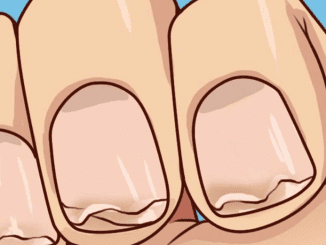Wi-Fi is a part of everyday life, but my grandpa is convinced that Wi-Fi signals are causing his headaches. It’s a belief that’s becoming more common, but it’s also one that sparks a lot of debate. Are his headaches genuinely caused by Wi-Fi, or could there be more to the story? Let’s dive into the scientific research, psychological factors, and the phenomenon known as electromagnetic hypersensitivity (EHS) to get to the bottom of this.

Understanding Wi-Fi and Electromagnetic Frequencies
What Exactly Are Wi-Fi Signals?
Wi-Fi operates using radio waves, a type of electromagnetic frequency (EMF) that allows for wireless internet connectivity. These radio waves typically have frequencies ranging between 2.4 GHz and 5 GHz. Unlike X-rays or ultraviolet light, which are higher-energy ionizing forms of radiation, Wi-Fi emits non-ionizing radiation.
The Safety of Non-Ionizing Radiation
Non-ionizing radiation, like that from Wi-Fi, doesn’t have enough energy to break chemical bonds or cause cellular damage. This is why it’s considered safer compared to ionizing radiation. Yet, some individuals claim they experience adverse health effects, such as headaches, from exposure to Wi-Fi signals.
Exploring Electromagnetic Hypersensitivity (EHS)
What Is Electromagnetic Hypersensitivity?
Electromagnetic hypersensitivity, or EHS, refers to a condition where individuals report symptoms such as headaches, dizziness, fatigue, and skin irritation when exposed to electromagnetic fields (EMFs), including those from Wi-Fi. People with EHS often say that even brief exposure to EMFs can trigger a range of physical symptoms.
The Science Behind EHS: Fact or Fiction?
Despite many self-reported cases of EHS, scientific research struggles to establish a direct, physiological cause. Clinical studies, including double-blind tests, often find that symptoms do not consistently align with exposure to electromagnetic fields. This suggests that EHS might be more related to psychological factors or other environmental causes rather than the EMFs themselves.
What Does Research Say About Wi-Fi and Health?
Extensive Studies on Wi-Fi Exposure
A substantial body of research has examined the potential health effects of Wi-Fi and similar non-ionizing radiation. Numerous studies, including those conducted by the World Health Organization (WHO) and other scientific organizations, conclude that Wi-Fi exposure at typical levels does not pose a significant health risk.
The Consensus Among Experts
The general consensus among experts is that there is no clear evidence to support claims of Wi-Fi-induced health issues, including headaches. The International Commission on Non-Ionizing Radiation Protection (ICNIRP) and other organizations maintain that Wi-Fi and similar technologies are safe for public use.

The Placebo Effect and Psychosomatic Responses
How Beliefs Influence Symptoms
The placebo effect, a psychological phenomenon where a person experiences real symptoms based on the belief that they’re being affected, could be at play in cases like my grandpa’s. When people believe that something—like Wi-Fi—causes harm, they may develop real, physical symptoms.
Psychosomatic Responses Explained
Psychosomatic symptoms occur when emotional or psychological factors cause physical symptoms. Media coverage of potential health risks and personal anecdotes can amplify anxiety, which in turn can cause real physical responses, like headaches. In the case of Wi-Fi, the anticipation of harm might be enough to trigger discomfort, even in the absence of actual physical effects.
Anecdotal Evidence vs. Scientific Evidence
Why Personal Stories Aren’t Enough
While personal stories, like my grandpa’s, offer valuable insight into how people perceive the world, they don’t meet the rigorous standards of scientific evidence. Anecdotal evidence lacks controls, making it difficult to establish clear cause-and-effect relationships.

The Need for Controlled Studies
Scientific studies control variables to distinguish between correlation and causation. For example, just because my grandpa’s headaches occur when Wi-Fi is present (correlation), it doesn’t mean the Wi-Fi is directly causing the headaches (causation).
Practical Tips for Managing Wi-Fi Concerns
Reducing Wi-Fi Exposure
If someone is convinced that Wi-Fi is affecting their health, there are simple steps they can take to reduce exposure. Here are a few strategies:
- Turn off Wi-Fi at night to minimize continuous exposure.
- Increase the distance from Wi-Fi routers, as the intensity of EMFs decreases with distance.
- Use wired connections when possible to limit exposure.
Addressing Anxiety Around EMFs
If anxiety about EMFs persists, it might be helpful to consult a mental health professional. Cognitive-behavioral therapy (CBT) techniques can help manage fears and anxiety, potentially reducing psychosomatic symptoms. Practicing relaxation techniques, like meditation or breathing exercises, can also help alleviate stress.

Conclusion: Balancing Belief with Science
While my grandpa firmly believes that Wi-Fi is the root cause of his headaches, the scientific evidence does not support this claim. The headaches he experiences are undoubtedly real, but the underlying cause may involve a complex mix of psychological factors, expectations, and personal beliefs rather than the Wi-Fi signals themselves. Balancing personal experiences with empirical evidence is essential. While continued research and understanding are needed, it’s also important to consider both the mental and physical dimensions of symptoms related to EMF exposure.


